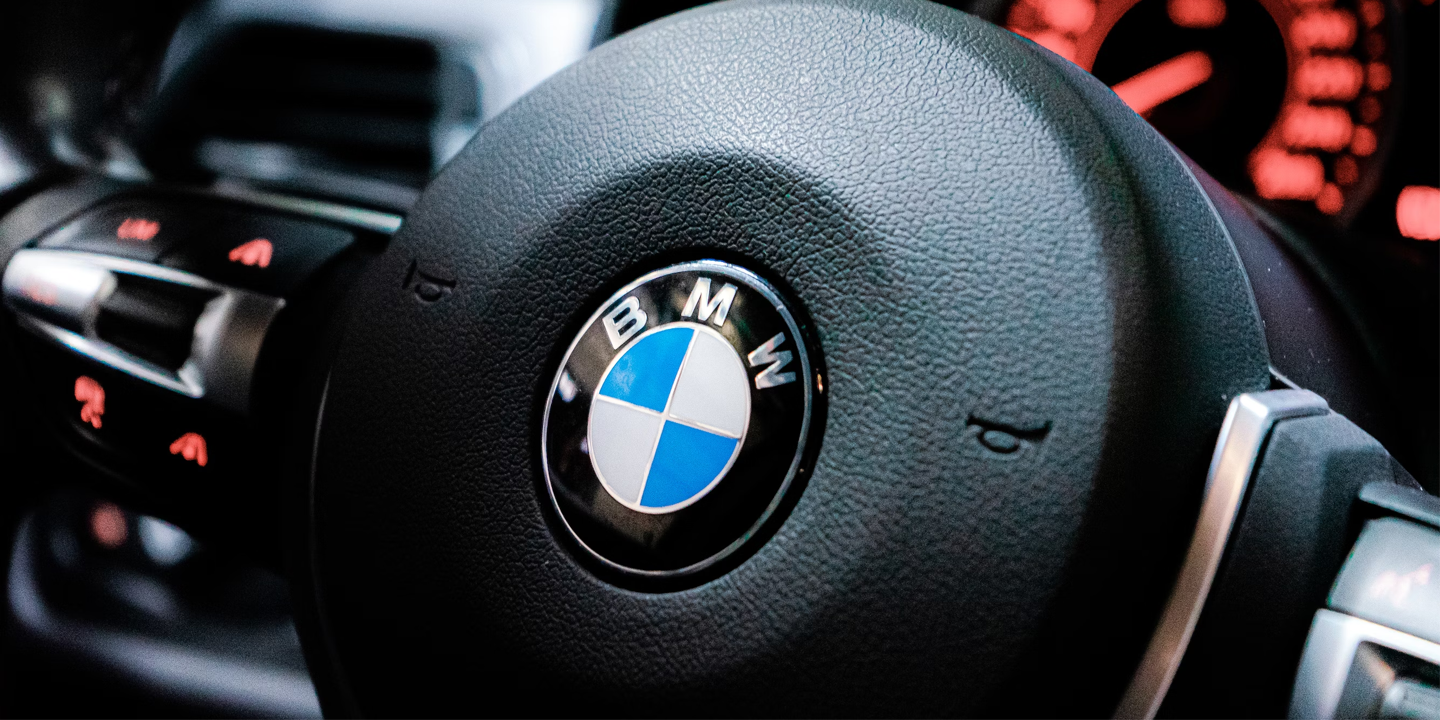When Innovation Goes Wrong
The car world constantly celebrates innovation, but not every design hits the mark. Some features are so baffling that they become legends for all the wrong reasons. Their bizarre choices challenge conventions and often ignore practicality. Let’s explore 20 of the most ridiculous car design elements ever made.
1. Pontiac Aztek’s Clashing Front End
Instead of bold, Pontiac delivered bizarre. The Aztek’s split grille and protruding nose created a front end that looked like multiple vehicles jammed together. Designers intended it as a rugged crossover, but it became a design laughingstock. Sales plummeted, with just over 119,000 units sold.
2. Tesla’s Yoke Steering Wheel
Traditional round wheels exist for a reason: control and comfort. Tesla ditched that in the Model S Plaid, opting for a yoke more suited to a jet cockpit. Reversing or making tight turns became awkward, and Tesla quietly began offering the round wheel as an optional retrofit by 2022.
 Tesla Yoke Revisited after 3 Months by Black Tesla
Tesla Yoke Revisited after 3 Months by Black Tesla
3. Chrysler PT Cruiser’s Retro Disaster
Chrysler attempted to recapture the 1930s flair with the PT Cruiser, but its bug-eyed headlights and upright body design felt cartoonish rather than classic. Despite initial hype, criticism soon followed. Although over 1.3 million were sold, the design became more infamous than iconic.
4. BMW’s Expanding Kidney Grilles
This car's signature kidney grilles embodied subtle elegance until they began to balloon. Recent models, like the 4 Series, feature oversized grilles that dominate the entire front fascia. Intended to project presence in global markets, the move sparked ridicule across car forums and memes.
 Santeri Viinamäki on Wikimedia
Santeri Viinamäki on Wikimedia
5. Fiat Multipla’s Double-Decker Headlights
Few designs puzzled the public like the Fiat Multipla’s two-tiered front lights. A second row of headlights above the windshield gave it a frog-eyed appearance. Despite winning Top Gear's Car of the Year award in 2000, the exterior was universally panned, and production finally ended in 2010.
 Tokumeigakarinoaoshima on Wikimedia
Tokumeigakarinoaoshima on Wikimedia
6. Lexus’ Predator Grille
Lexus aimed for aggression but overshot into absurdity. Its “spindle” or “Predator” grille, introduced on the 2013 GS, ballooned into a gaping mouth. To many, it looks like a sci-fi villain’s mask. Despite polarizing opinions, the grille remains a signature on models like the LX 600.
7. 1958 Ford Edsel’s Horse Collar Grille
Introduced with massive hype, the Edsel’s vertical oval grille stunned buyers but for the wrong reasons. Many thought it resembled a toilet seat, clashing awkwardly with horizontal styling cues. Ford lost over $250 million, and production ceased just two years later in 1960.
 GPS 56 from New Zealand on Wikimedia
GPS 56 from New Zealand on Wikimedia
8. Lamborghini Countach’s Periscope Rearview
Instead of a standard rearview mirror, early Countach models offered a roof-mounted “periscope” channel. It proved nearly useless, given the car’s tiny rear window and obstructed view. Later models added a conventional mirror, but the quirky periscope remained part of Countach lore.
 Brian Snelson from Hockley, Essex, England on Wikimedia
Brian Snelson from Hockley, Essex, England on Wikimedia
9. Smart ForTwo’s Faux Trunk Lid
The Smart ForTwo teased a trunk with its rear body panel—but didn’t deliver. Opening it revealed a narrow drop-down tailgate, and groceries and luggage had to be crammed in sideways. The misleading design persisted across both first- and second-generation models sold between 1998 and 2014.
 Atomic Taco from Seattle, WA, USA on Wikimedia
Atomic Taco from Seattle, WA, USA on Wikimedia
10. Chevrolet SSR’s Pickup-Roadster Mashup
Despite using a Corvette-derived V8 in later models, production ended quietly in 2006. The car combined a retro-styled convertible with a pickup bed, but confused more than it impressed. It lacked real utility due to a shallow cargo area and poor visibility.
11. Nissan Juke’s Unbalanced Headlights
The Nissan Juke stunned with wildly asymmetrical front lighting—large round main lamps paired with slim, bug-eye indicators above. Though this split design aimed to emphasize sportiness, it often looked confused. Launched in 2010, the Juke developed a cult following despite its polarizing facial expression.
12. BMW i3’s Impractical Rear Doors
The BMW i3’s rear-hinged doors required the front doors to open first, complicating rear passenger access. Lacking a central B-pillar, they raised safety concerns among some users. Though stylish, the doors proved impractical and even hazardous in everyday use.
 Tokumeigakarinoaoshima on Wikimedia
Tokumeigakarinoaoshima on Wikimedia
13. Ford Mustang Mach-E’s Taillight Bars
Traditionally, a muscle car staple, the Mustang’s three-bar taillights reappeared on the electric Mach-E. However, their oversized, vertical reimagining of the SUV puzzled muscle car purists. The taillight design drew mixed reviews from 2020 onward, with critics arguing that it diluted the Mustang’s iconic identity.
14. Cadillac Cimarron’s Badge Engineering Failure
In the 1980s, Cadillac rebadged the bland Chevrolet Cavalier as the Cimarron to compete with European luxury brands. The result was a small, underpowered car with no distinct luxury features. Poor sales and negative reception led to its discontinuation in 1988.
15. Toyota Prius’ Disjointed Rear Window
The Prius features a split rear window design, separated by a thick spoiler, to maximize rear visibility and aerodynamics. Although practical, this design creates awkward rear sightlines and limits rearward visibility for some drivers. This controversial feature has persisted since 2004 across multiple Prius generations.
16. Jeep Renegade’s X-Shaped Taillights
The Jeep Renegade’s taillights feature a bold “X” pattern inspired by vintage military gas cans. While unique, the design often confuses drivers at night due to unusual light distribution. Introduced in 2014, the taillights aim to evoke ruggedness but sometimes clash with modern safety standards.
17. Subaru WRX STI’s Oversized Rear Wing
The WRX STI’s massive rear spoiler became iconic among rally fans, but its size often overwhelms the sedan’s proportions. It was functional at high speeds, but the wing impeded rear visibility. This feature has remained prominent since the 1990s, underscoring Subaru’s motorsport heritage.
 Tokumeigakarinoaoshima on Wikimedia
Tokumeigakarinoaoshima on Wikimedia
18. Renault Twingo’s Oddly Positioned Headlights
Renault’s third-gen Twingo placed headlights unusually low and wide, diverging from conventional placements. This layout affects both aesthetics and nighttime illumination patterns. The design attempted to modernize the city car, but it divided opinion, with some finding it endearing and others finding it awkward.
19. Cadillac Escalade’s Chrome Overkill
The Escalade has long been a symbol of luxury, but recent models have pushed chrome accents to extreme levels. Grilles and wheels feature heavy chrome plating that overwhelms the design. Since 2015, this “bling” approach has drawn criticism for prioritizing flash over tasteful restraint.
 No machine-readable author provided. Luc106 assumed (based on copyright claims). on Wikimedia
No machine-readable author provided. Luc106 assumed (based on copyright claims). on Wikimedia
20. Mini Cooper’s Half-Size Spare Tire
Early Mini Coopers included an undersized “space saver” spare tire hidden under the rear floor. While this saved cabin space, the tiny spare offered limited driving range and lower speeds. This compromise emphasized compact efficiency but frustrated drivers needing reliable roadside support.



















